In the world of culinary delights, capturing the essence of food products through photography is an art form. Get ready to tantalize taste buds and entice consumers as we delve into the food product photography expert tips, techniques, and secrets professionals use to create stunning and appetizing visuals that leave a lasting impression.
We'll explore how to craft images that showcase food products in their best light, evoke emotions, and tell compelling stories. So, let's uncover the key ingredients to elevate your food product photography and leave viewers hungry for more.
In this article
8 Stunning Food Product Photography Ideas
To be a successful photographer, you must constantly develop new and creative food photography ideas to impress your audience. However, coming up with creative food photography ideas can be difficult. Here are some stunning food product photography ideas.
1. Foods On A Reflective Surface
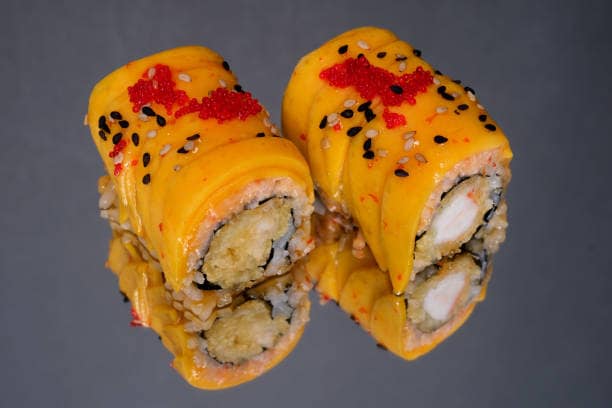
This idea involves placing food products on reflective surfaces like mirrors or glossy tabletops to create visually striking and elegant compositions. The reflective surface adds depth and dimension to the photograph, making the food appear more enticing.
Find a suitable reflective surface that complements the food's colors and textures. Position the food at an angle that captures its best features while showcasing the reflections. Experiment with lighting to avoid unwanted glare and ensure the food remains the focal point.
2. Conceptual Food Photography
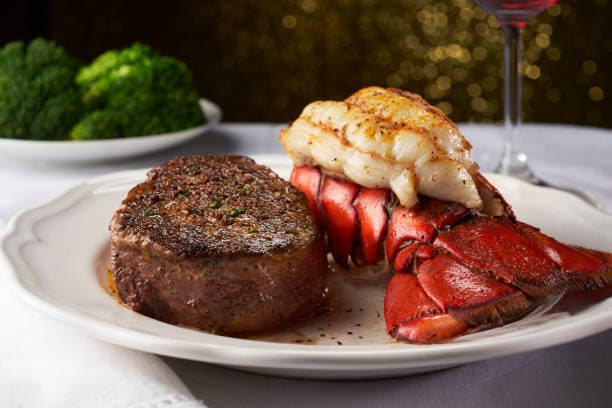
Conceptual food photography goes beyond the ordinary and conveys a message or story with creative ideas, themes, and symbolism. It involves using props, colors, and compositions to evoke emotions or make a statement.
Brainstorm unique concepts that align with the food product's brand or characteristics. Choose props and backgrounds that reinforce the concept. Pay attention to lighting and editing to enhance the mood and visual impact of the photograph.
3. Creativity On Food's Primary Characteristics
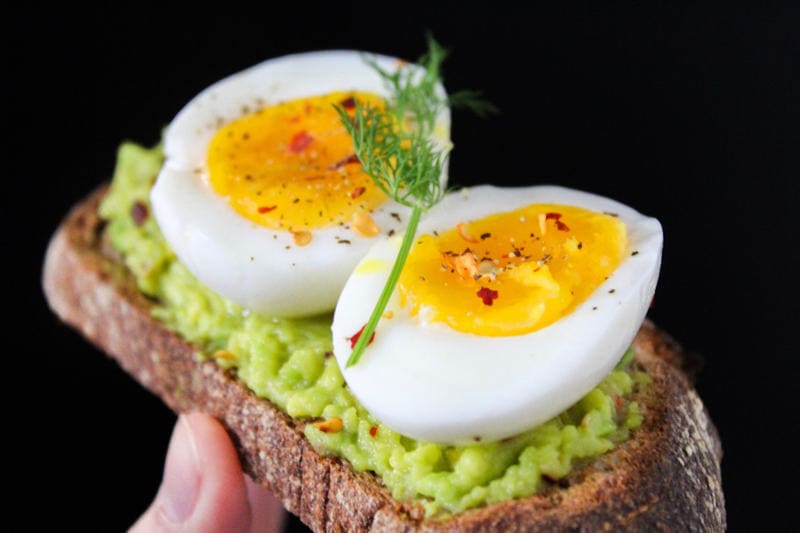
This approach highlights a food product's key features or ingredients in an artistic and eye-catching manner. It's about showcasing the essence of the food through creative arrangements.
Identify the essential characteristics of the food product you want to emphasize. Experiment with different arrangements and compositions to draw attention to these features. Use complementary props and backgrounds that enhance the overall presentation.
4. Food Acrobatics
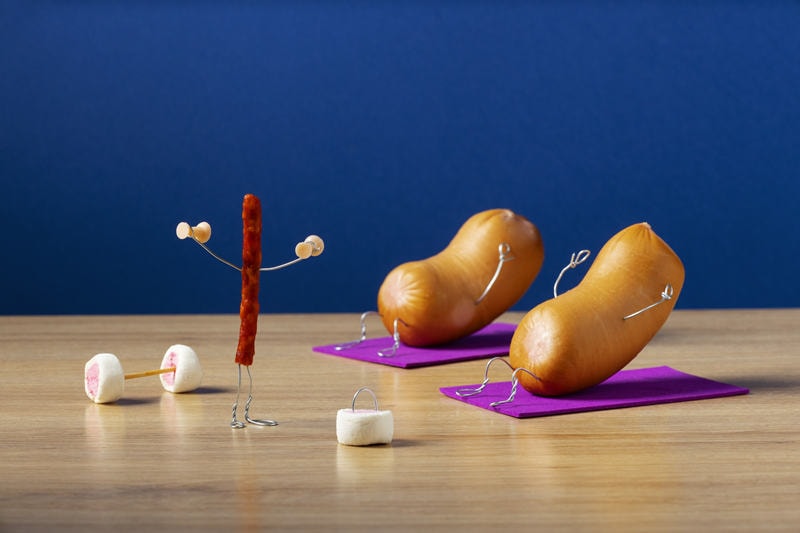
Food acrobatics captures dynamic and action-packed shots of food products mid-air or during movement. This technique adds a sense of energy and excitement to the photographs.
Use high-speed photography to freeze the action at the right moment. Use tripods, remote triggers, and burst mode to capture the food in motion. Be patient and persistent to get that perfect shot.
5. Foods With Liquid Splash Effect
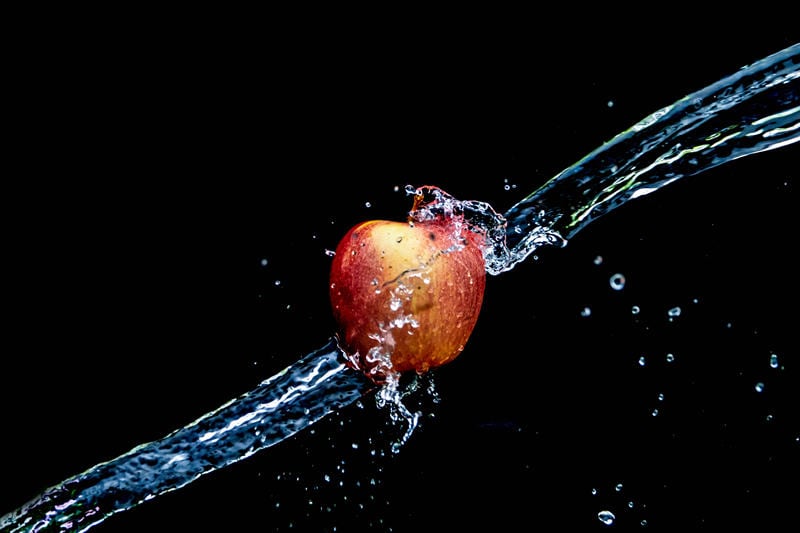
The liquid splash effect adds drama and freshness to food product photography. It's particularly effective for beverages, fruits, and dishes with sauces or dressings.
Set up your shot with the food and the liquid in position. Time the splash by manually pouring the liquid or using a dropper to achieve precise control. To capture the splash in fine detail, use a fast shutter speed.
6. Creative And Funny Food Shots

Humor and creativity can make food product photography memorable and shareable. This idea involves creating playful and funny scenes with the food, catering to a lighthearted audience.
Think outside the box and devise amusing scenarios involving the food product. Utilize props, colorful backgrounds, and playful compositions to enhance the humor. Don't be afraid to try something unconventional.
7. Foods With Cooking Paraphernalias And Utensils
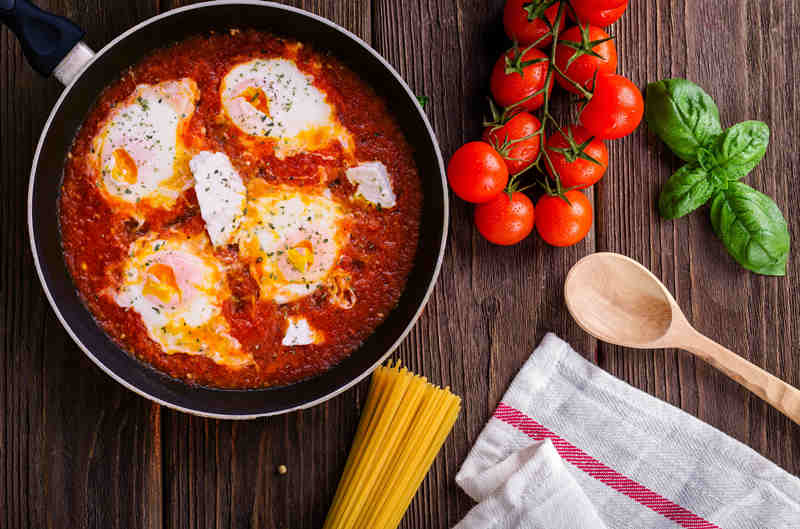
Incorporating cooking tools, utensils, and ingredients alongside the food product gives a sense of process and craftsmanship, making the photo more authentic and appealing.
Arrange the cooking paraphernalia neatly around the food product, ensuring they complement each other in colors and textures. Create a visually pleasing composition while keeping the focus on the main food item.
8. Foods With Human Elements
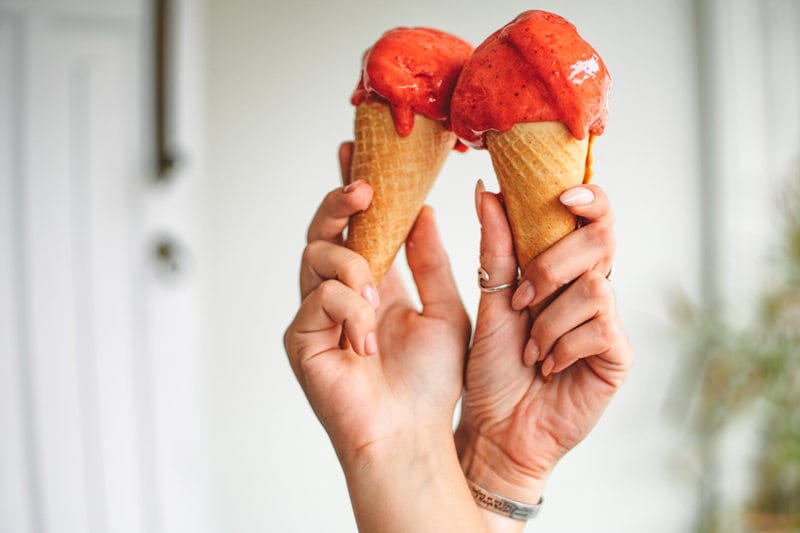
Introducing the human element into food product photography adds a sense of lifestyle and relatability. It can involve people interacting with the food, preparing it, or enjoying it.
Use models or friends to pose with the food product naturally. Capture candid moments to evoke genuine emotions. Ensure the human element enhances the overall appeal of the food and doesn't distract from it.
5 Food Product Photography Tips to Remember
You don't have to snap everything on the plate, and that's the first step toward getting people to like your content. It also implies that the food should be presented appealingly. Here are some fantastic food photography tips to help you improve your skills and bring out the best in yourself.
1. Shoot from all the available angles.

Capture your food product from different angles to find the most appealing perspective. Each angle can highlight unique features, textures, and shapes, offering versatility to your food photography.
Experiment with shooting from overhead (top-down), at eye level (straight on), and a 45-degree angle. Adjust the positioning to showcase the most enticing aspects of the food product. Keep the composition balanced and visually appealing.
2. Provide adequate (but not too much) artificial lighting.
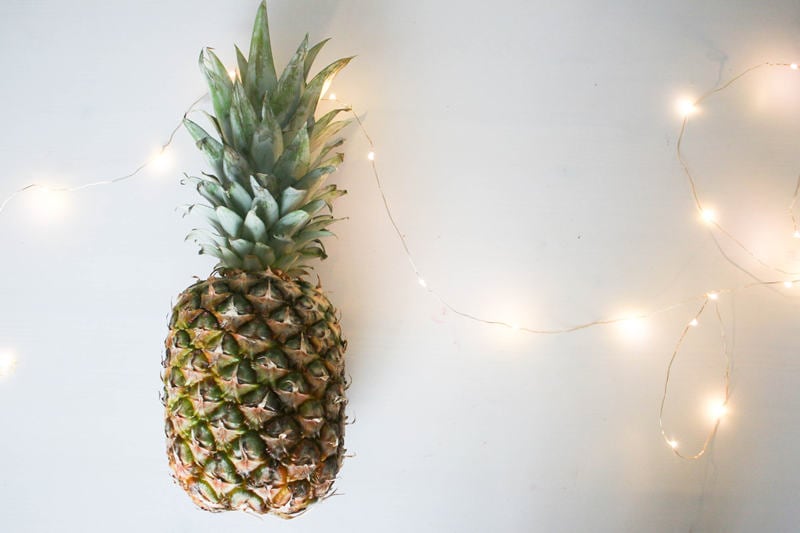
Proper lighting is crucial for food photography to enhance colors, textures, and overall presentation. However, excessive lighting can lead to harsh shadows and overexposed areas.
Use diffused artificial lighting, such as softboxes or reflectors, to create soft and even illumination. Avoid direct, harsh light that creates unflattering shadows. Adjust the intensity of the lighting to achieve the desired effect without overwhelming the scene.
3. Take advantage of natural lighting.
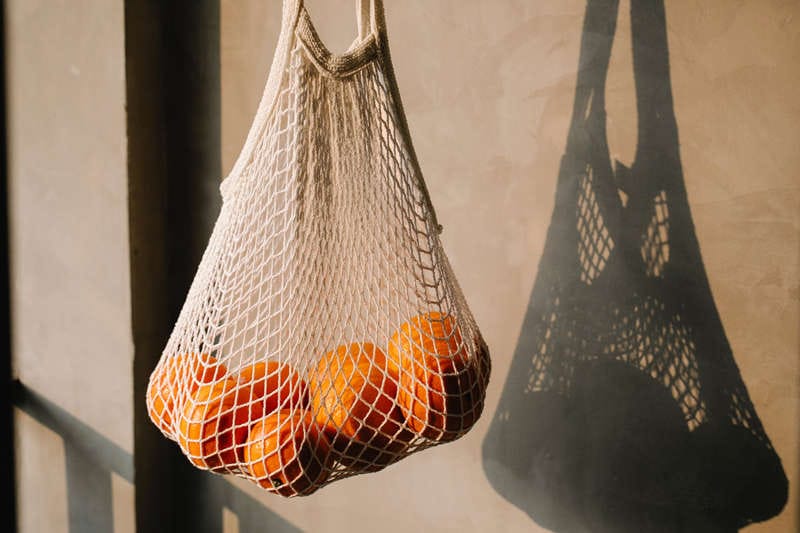
Natural light can add a natural and warm ambiance to your food photography. It helps to highlight details and textures, making the food look more appealing and appetizing.
Set up your shooting area near a window with ample natural light. Use sheer curtains or diffusers to soften and control the light's intensity. Shoot for a soft, flattering glow during the golden hours (early morning or late afternoon).
4. Form some linear elements in the composition.
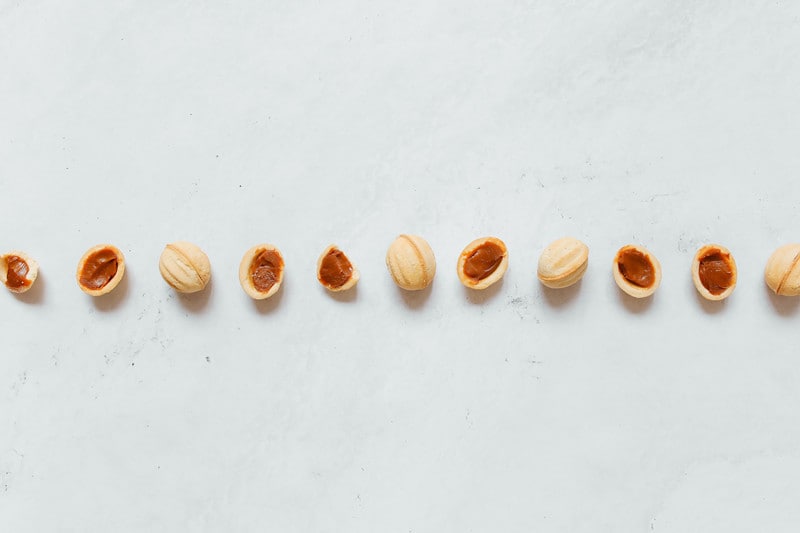
Incorporating lines and shapes in your composition can lead the viewer's eyes toward the main subject (the food product). Linear elements add depth and structure to the photograph.
Use props, utensils, or natural lines in the background to create leading lines that guide the viewer's gaze to the food product. Position them strategically to enhance the overall visual flow and keep the focus on the main subject.
5. Stick to a specific set of color palettes.
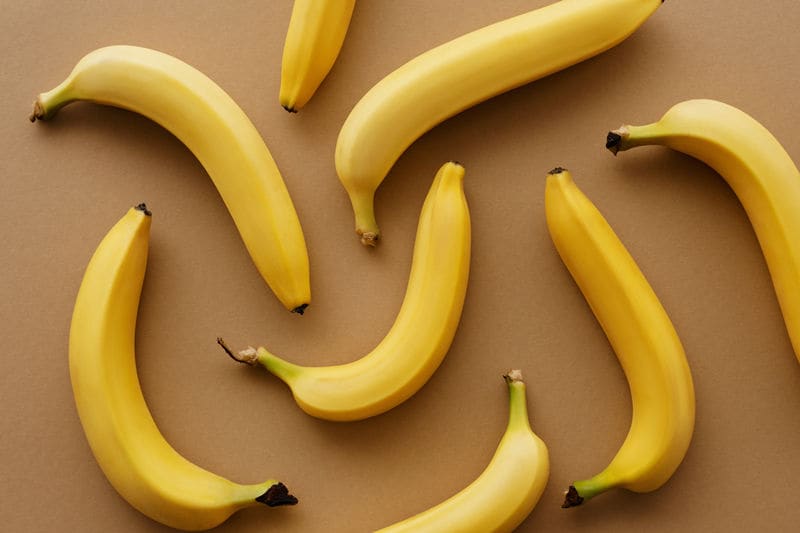
A cohesive color palette can create a harmonious and visually pleasing image. Consistency in color choice sets the mood and helps the food product stand out.
Choose a color scheme that complements the food product and its surroundings. Consider the brand's identity and the emotions you want to evoke. Use props, backgrounds, and garnishes that align with the chosen color palette.
5 Things to Avoid When Shooting Food Product Photography
Food photography is more complicated than you might think. If you frequently photograph food but lack the necessary professional knowledge, you may make mistakes without realizing it. Below are the key points to remember when photographing food to avoid common blunders to help you take better food photographs.
1. Foods and ingredients don't look fresh.
Avoid using food products and ingredients that appear wilted, dried out, or past their prime. Freshness is essential in food photography as it directly impacts the appeal and appetite appeal of the dish.
Why it's needed to avoid:
Unappetizing or unappealing food items can turn off viewers and fail to evoke the desired emotions or cravings. The primary goal of food product photography is to entice viewers to try the product, which can only happen if the food looks fresh and inviting.
Alternative action:
Use fresh, high-quality ingredients and ensure they are properly prepared and arranged before the photoshoot. Use food styling techniques to enhance the dish's appearance without altering its edibility if necessary.
2. No negative space in the framing.
Avoid cluttering the frame with too many elements, leaving no room for negative space. Negative space gives breathing room to the main subject and helps draw the viewer's attention to the food product.
Why it's needed to avoid:
Without negative space, the composition can feel overwhelming and chaotic, diminishing the focus on the food product. Negative space makes the product stand out and creates a balanced and visually pleasing composition.
Alternative action:
Leave space around the food product to create a clean and minimalist look. Utilize simple and complementary backgrounds to add visual interest without detracting from the main subject.
3. Setting too much saturation.
Avoid over-saturating the colors in post-processing. While vibrant colors can be eye-catching, excessive saturation can make the food product look unrealistic and unappetizing.
Why it's needed to avoid:
Over-saturation can distort the natural colors of the food, making it look artificial and unappealing. It can also distract viewers from the actual taste and texture of the dish.
Alternative action:
Enhance colors selectively and subtly, maintaining a natural and realistic appearance. Use color correction tools to ensure the colors are true to life without going overboard.
4. The props aren't arranged properly.
Avoid haphazardly placing props in the frame. Props should complement the food product and enhance the storytelling without overwhelming or distracting the dish.
Why it's needed to avoid:
Poorly arranged props can create a cluttered and disorganized look, drawing attention away from the food product. Props should add value to the composition and not steal the spotlight.
Alternative action:
Plan the arrangement of props to create a cohesive and visually appealing setup. Use props that complement the food's style and theme, and position them strategically to support the main subject.
5. The food design and style aren't telling a story.
Avoid presenting the food product without any context or narrative. Food photography should evoke emotions and tell a story that resonates with the audience.
Why it's needed to avoid:
Without a story or context, the food product may lack relevance and fail to engage viewers. A compelling story helps create a connection with the audience and entices them to explore further.
Alternative action:
Consider the brand's identity or the dish's origin and history to create a narrative around the food product. Use styling, props, and background elements that reinforce the story and resonate with the target audience.
Master the Food Photography With Wondershare VirtuLook
Mastering food product photography has always been an exciting yet challenging endeavor. While numerous stunning ideas exist, some of them can be complicated and require expensive equipment or professional skills to execute successfully. But worry not! Now, there's a game-changer in food photography - Wondershare VirtuLook.
Wondershare VirtuLook is an advanced AI-powered tool designed to help photographers, professionals, and amateurs bring their food product photography ideas to life with little to no effort or excessive costs. With Wondershare VirtuLook, you can easily create high-quality, visually captivating food product images that will make your products shine and attract customers.
Features of Wondershare VirtuLook for Food Product Photography:
Smart Composition Assistant: Wondershare VirtuLook uses intelligent algorithms to assist you in framing your shots perfectly. It analyzes the food product and suggests the best angles and compositions to make your images visually appealing.
Lighting Enhancement: Lighting plays a crucial role in food photography. Wondershare VirtuLook can enhance the lighting in your images, making the food look more enticing and delicious, even if you shot it in less-than-ideal conditions.
Color Correction: Say goodbye to worries about colors not turning out as desired. Wondershare VirtuLook can automatically adjust and correct the colors in your images, ensuring that the food looks vibrant and true to life.
Background Removal: Sometimes, the background can distract from the main subject. With Wondershare VirtuLook's background removal feature, you can easily isolate the food product, allowing you to experiment with different backgrounds or place it seamlessly into marketing materials.
With Wondershare VirtuLook at your disposal, you can now effortlessly master food product photography, turning your creative ideas into stunning, professional-quality visuals. Say goodbye to complicated setups and expensive equipment - Wondershare VirtuLook is your all-in-one solution to bring your food photography dreams to fruition. Start using Wondershare VirtuLook today and take your food product images to a new level! Here’s how:
Step 1. Open the Wondershare VirtuLook website on your browser. Click “Get Started”.

Step 2. Upload your original image and left click on the area of the cloth or product you wish to keep.
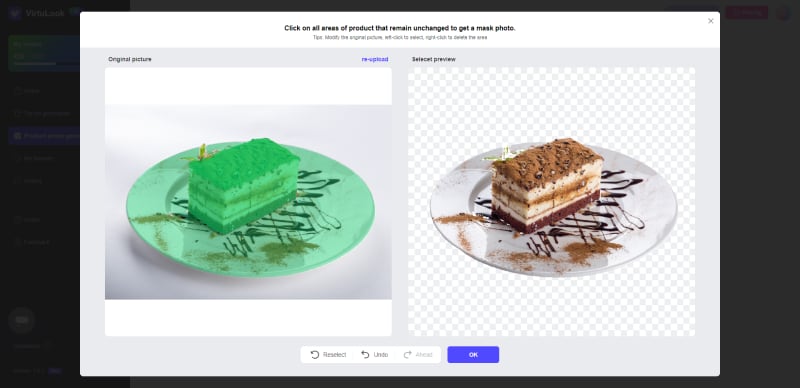
Step 3. Change your background by Using Template/Custom Editing.
Change the style and background by selecting the different template. This option will change the areas of the picture that you don't want to keep to your preferred background.
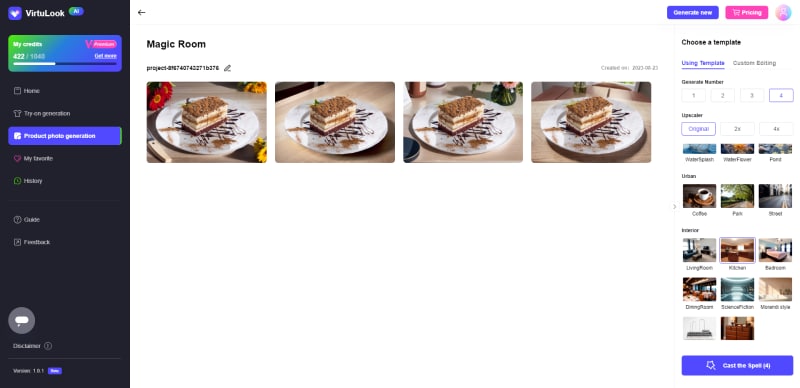
Alternatively, if the template does not currently have the scene you need, you can try using the Custom Editing feature to generate your own customized photo.
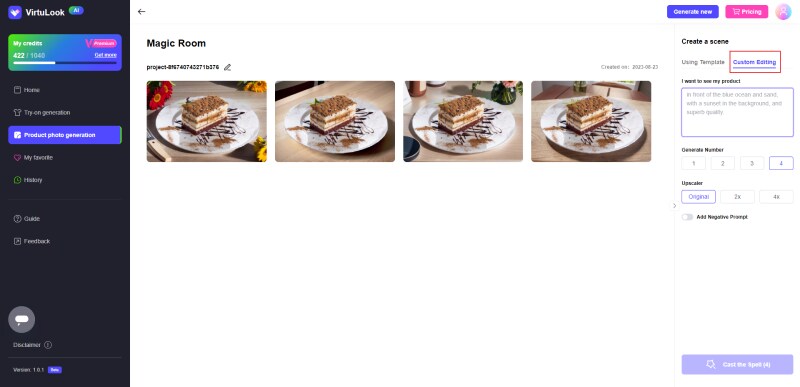
Step 4. Click “Cast the Spell” and start receiving images in seconds. Lastly, you can download or bookmark the photos you like. We also appreciate timely feedback from you regarding any issues with image quality or any other concerns you may have.
Conclusion
Elevating food product photography from ordinary to extraordinary is a rewarding journey filled with creativity and innovation. By applying the pro tips and with the help of Wondershare VirtuLook, you can capture the essence of culinary delights and leave a lasting impression on your audience.
